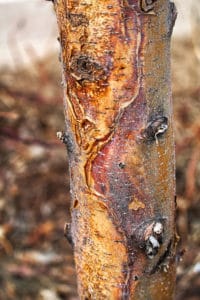What Is a Tree Sunscald and How Can You Prevent It?
If you’ve been to the north and inspected some of the trees’ south-facing sides, you might have noticed signs of what is called a tree sunscald. A sunscald typically occurs when temperatures in the wintertime rise just above freezing during the day, then drop to 5-6 degrees or more below freezing.

What happens is an intriguing phenomena: as the trees are faced with the warmth of the sunlight during a warm winter day, they temporarily exit their hibernation cycle as a response to being exposed to the heat and sunlight. This “awakening” is typically localized on the side where the exposure is greatest – in the north, that will typically be the south side of the tree.
As the temperature drops in the evening and night, however, the tree will not have enough time to re-enter its hibernation cycle, which leaves it vulnerable to the cold. The result is that the cold ends up killing many of the awakened living cells, and even lead to frost cracks, which typically arise when the tree trunk expands and contracts as a result of wide temperature fluctuations.
Painting, wrapping and shading the trees that are most likely to be exposed to sunlight during the winter are among the best methods used to prevent tree sunscald and keep trees healthy overall. Look to Revive in Denver for winter garden fertilizing tips.
Original Post over here: What Is a Tree Sunscald and How Can You Prevent It?
Comments
Post a Comment